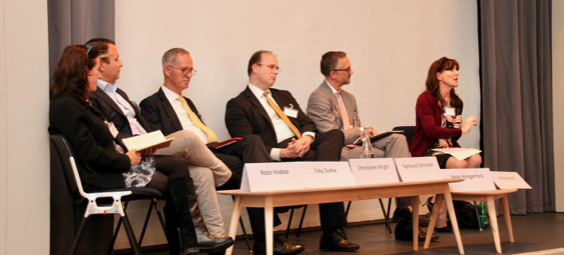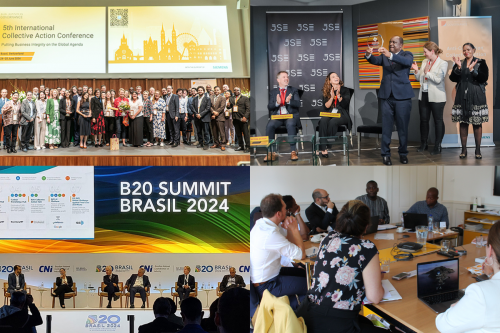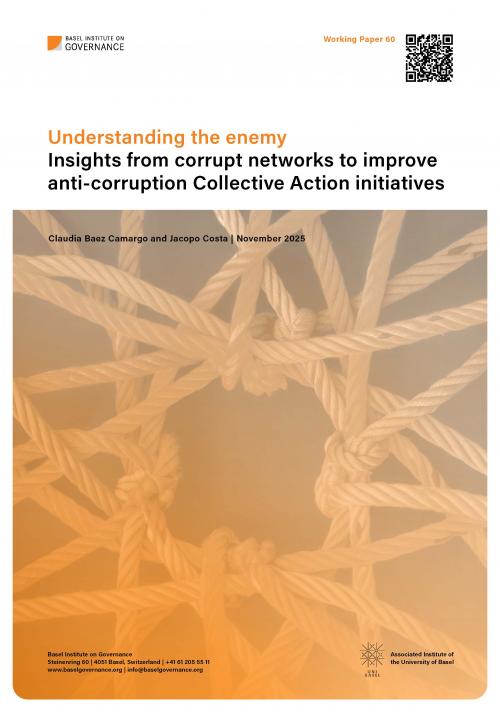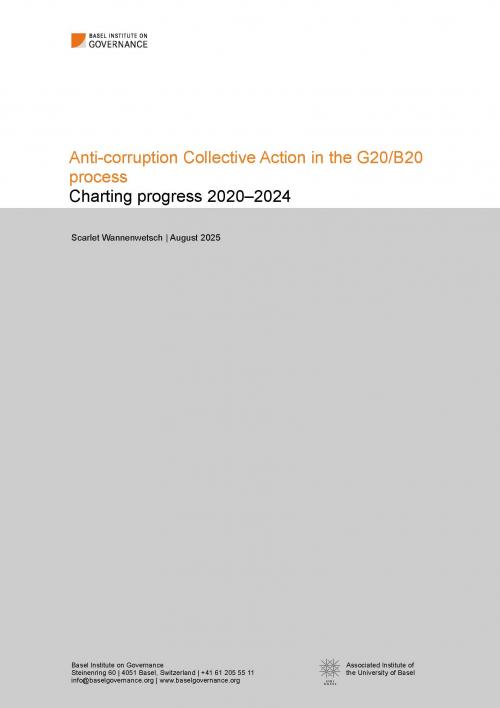Tainted Assets Initiative: developing a transparent framework to address historic taint in assets

The official launch of the Tainted Assets Initiative took place on 15 November 2018 at the Basel Institute on Governance’s Conference on Collective Action. This event marks the formation of the Project’s secretariat at the Basel Institute.
With the support of the OECD Secretariat, this multi-stakeholder initiative aims to develop a practical resolution mechanism to enable companies and countries to address historic “taint”, such as a legacy of corruption, in assets they hold or wish to acquire or dispose of.
A wide variety of organisations and stakeholders from different business organisations, professional advisory practices including Forensic Risk Alliance, leading law firms such as Paul Hastings, Norton Rose Fulbright and Mayer Brown, and civil society organizations such as the Natural Resource Governance Institute, have contributed to the development of the initial concept, goals and working method of the Tainted Assets Initiative. This launch will facilitate the continued contributions of all these organisations as well as the opportunity for new stakeholders to join the discussions, including additional business and civil society organisations and governments.
The challenge
The issue of “tainted assets” commonly arises during due diligence in the context of a merger or acquisition involving assets such as oil and gas fields, mining concessions or telecoms licences. A company or government may uncover “taint” in the assets concerned. This may arise from legacy behaviours and/or be identified as a result of enhanced beneficial ownership disclosure or newly implemented compliance or audit procedures.
While rules on managing future risks are well known and addressed by laws on bribery and corruption, there is an absence of guidance in legal regimes of how to effectively deal with legacy corruption issues. This project centres on closing that gap, which currently undermines sustainable development in countries that are rich in assets yet struggle with corruption. It also seeks to provide a mechanism for governments and companies to minimise risks using proactive remedial and preventive measures. One goal of the Initiative is to help investor companies avoid the stark choice between walking away or risking the uncertainty of potential enforcement actions.
“Law enforcement will closely examine what occurs with a tainted asset and consider whether companies or individuals involved with the tainted asset should face criminal investigation,” noted Nathaniel Edmonds, a Partner at the law firm of Paul Hastings and a former anti-corruption prosecutor at the U.S. Department of Justice. “There currently is no framework to structure what comes next for an asset tainted with legacy corruption issues, and the increasing cooperation among prosecutors will only heighten the risks of enforcement for companies and their financial advisors considering involvement in such an asset.”
Countries with potentially stranded assets face a choice between settling for lower-quality operators with lesser compliance standards or making an effort to remain attractive for foreign investors that are increasingly under pressure from law enforcement, civil society, online leaks or activists scrutinising their operations and track records in sustainability.
The Initiative
The main goal of the Tainted Assets Initiative is to develop a practical framework that is straightforward, transparent and provides accountability for all stakeholders in addressing these legacy issues of corruption. For companies, the Initiative hopes to provide some certainty so that they can understand the risks without shirking the legal obligations arising from the tainted asset. Any resolution cannot simply waive away the taint of corruption as law enforcement agencies also have legitimate interests in ensuring that wrongdoers are held accountable.
"To be credible, we'll need a process that protects the public interest first and foremost," said Alexandra Gillies, an advisor at the Natural Resource Governance Institute. "That will be tricky to accomplish, but current approaches to handling assets with corrupt histories have fallen very short."
The process should offer a means for countries to address historic issues and deliver outcomes that reflect fair and competitive valuations of the assets concerned, for the benefit of all involved. “We are delighted to be working on such a vital initiative, which is focused on remediating and rehabilitating assets to generate value and facilitate capital flows into countries which typically need just that,” commented Toby Duthie, Founding Partner of the Forensic Risk Alliance.
The Basel Institute will now leverage its network and experience in Collective Action to help drive the Initiative forward. As a neutral, non-partisan player, the Basel Institute’s International Centre for Collective Action will facilitate the involvement of representatives from the private, public and non-profit sectors, as well as civil society, in an environment of trust and transparency. Immediate next steps include promoting active membership and encouraging a government to step up to pilot the process and enable key stakeholders to shape the Initiative and its framework in future. The end goal is integration into an international convention and recognition by national laws.
Get involved
The Tainted Assets Initiative tackles a real problem holding back sustainable development in countries affected by tainted assets. To fully achieve its potential, the Initiative needs active support from businesses, international organisations, governments, NGOs and civil society organisations. If you have ideas for actively contributing to this project with funding, outreach or by sharing your expertise through participation in the Working Group, please contact Gemma Aiolfi.



